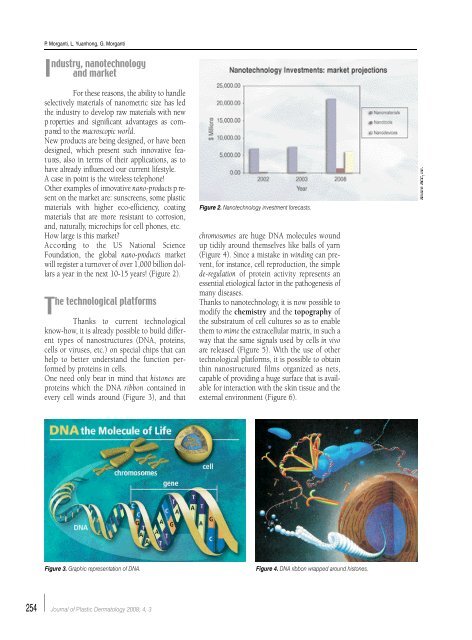N° 3 - Salute per tutti
N° 3 - Salute per tutti
N° 3 - Salute per tutti
Create successful ePaper yourself
Turn your PDF publications into a flip-book with our unique Google optimized e-Paper software.
254<br />
P. Morganti, L. Yuanhong, G. Morganti<br />
ndustry, nanotechnology<br />
I and market<br />
For these reasons, the ability to handle<br />
selectively materials of nanometric size has led<br />
the industry to develop raw materials with new<br />
p ro<strong>per</strong>ties and significant advantages as comp<br />
a red to the m a c roscopic world.<br />
New products are being designed, or have been<br />
designed, which present such innovative feat<br />
u res, also in terms of their applications, as to<br />
have already influenced our current lifestyle.<br />
A case in point is the wireless telephone!<br />
Other examples of innovative n a n o - p roducts p resent<br />
on the market are: sunscreens, some plastic<br />
materials with higher eco-eff i c i e n c y, coating<br />
materials that are more resistant to corro s i o n ,<br />
and, naturally, microchips for cell phones, etc.<br />
How large is this market?<br />
A c c o rdi ng to the US National Science<br />
Foundation, the global n a n o - p ro d u c t s m a r k e t<br />
will register a turnover of over 1,000 billion dollars<br />
a year in the next 10-15 years! (Figure 2).<br />
he technological platforms<br />
T<br />
Thanks to current technological<br />
know-how, it is already possible to build different<br />
types of nanostructures (DNA, proteins,<br />
cells or viruses, etc.) on special chips that can<br />
help to better understand the function <strong>per</strong>formed<br />
by proteins in cells.<br />
One need only bear in mind that histones are<br />
proteins which the DNA ribbon contained in<br />
every cell winds around (Figure 3), and that<br />
Journal of Plastic Dermatology 2008; 4, 3<br />
Figure 2. Nanotechnology investment forecasts.<br />
chromosomes are huge DNA molecules wound<br />
up tidily around themselves like balls of yarn<br />
(Figure 4). Since a mistake in winding can prevent,<br />
for instance, cell reproduction, the simple<br />
de-regulation of protein activity represents an<br />
essential etiological factor in the pathogenesis of<br />
many diseases.<br />
Thanks to nanotechnology, it is now possible to<br />
modify the chemistry and the topography of<br />
the substratum of cell cultures so as to enable<br />
them to mime the extracellular matrix, in such a<br />
way that the same signals used by cells in vivo<br />
are released (Figure 5). With the use of other<br />
technological platforms, it is possible to obtain<br />
thin nanostructured films organized as nets,<br />
capable of providing a huge surface that is available<br />
for interaction with the skin tissue and the<br />
external environment (Figure 6).<br />
Figure 3. Graphic representation of DNA. Figure 4. DNA ribbon wrapped around histones.

















